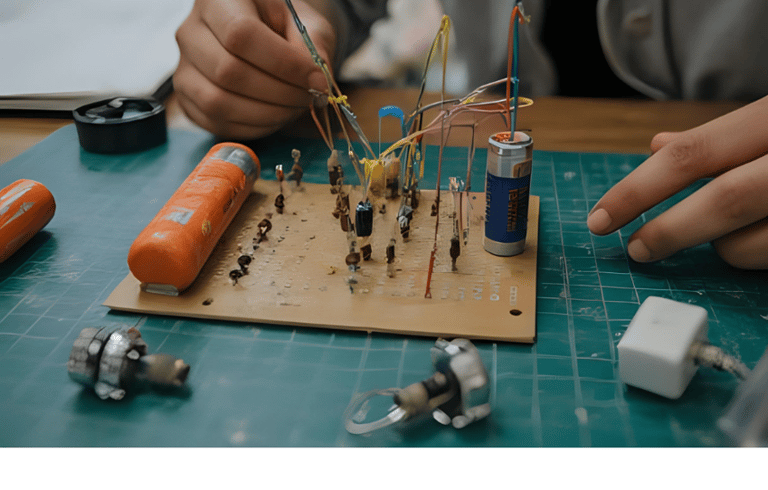Empowering Science and Engineering Education with PhET Interactive Simulations
5/23/20254 min read


Introduction
In the dynamic landscape of contemporary education, particularly in the fields of science and engineering, the integration of interactive learning tools is revolutionizing how students conceptualize complex phenomena. Among the most impactful of these tools are PhET Interactive Simulations, developed by the University of Colorado Boulder. These simulations are grounded in decades of learning science research and offer a unique, inquiry-driven platform that bridges the gap between abstract theory and experiential understanding (PhET, n.d.). Their accessibility, adaptability, and empirical effectiveness make them an indispensable asset in modern STEM pedagogy.
The Educational Impact of PhET Simulations
Evidence-Based Instructional Design
PhET simulations are the product of robust, iterative design processes involving direct classroom observation, cognitive task analysis, and student feedback. Each simulation is subject to empirical validation to ensure alignment with core learning goals. According to studies published in Interactive Learning Environments, PhET simulations significantly improve students' comprehension, particularly in abstract subjects such as quantum mechanics and electromagnetism (MDPI, 2024).
Constructivist Learning Framework
Rooted in constructivist theories of learning, PhET simulations allow students to manipulate variables, test hypotheses, and visualize outcomes in real time. This promotes active engagement and a deeper understanding of scientific principles through experiential learning rather than rote memorization.
Universal Accessibility and Inclusivity
PhET simulations are accessible in over 100 languages, offering cross-platform compatibility for desktops, tablets, and mobile devices. Their open-source nature ensures equitable access for learners worldwide, regardless of socio-economic status or geographical limitations (PhET Teaching Resources).
Educational Benefits for STEM Learners
Enhanced Visualization of Complex Concepts
Whether visualizing electric field lines, modeling molecular interactions, or observing forces in motion, PhET simulations enable learners to see otherwise invisible phenomena. This visual context is particularly beneficial in physics and chemistry, where theoretical models often lack tangible representation.
Development of Scientific Inquiry and Critical Thinking
PhET simulations mirror the scientific method. Students learn to formulate research questions, manipulate independent variables, observe dependent variables, and draw evidence-based conclusions. These skills are foundational for scientific literacy and essential in engineering problem-solving.
Bridging Theory and Practice
For engineering students, simulations like the "Circuit Construction Kit" or "Fluid Pressure and Flow" provide safe, cost-effective environments to experiment with real-world systems. This prepares students for industry-relevant tasks and enhances their readiness for internships and employment.
How to Integrate PhET Simulations into Curriculum
Identify and Align with Learning Objectives
Start by mapping course objectives to appropriate simulations. For example, if the goal is to understand Newtonian mechanics, simulations like "Forces and Motion" or "Projectile Motion" are highly suitable.
Select Appropriate Simulations by Discipline and Level
PhET categorizes its library by subject (physics, chemistry, biology, mathematics, and earth science) and education level (K-12 to university). This allows instructors to tailor content to cognitive readiness.
Design Scaffolded, Inquiry-Based Activities
Use guided inquiry worksheets and lab activities that accompany simulations. Resources like the PhET Activities Database offer peer-reviewed, ready-to-use lesson plans that encourage deep exploration.
Incorporate Simulations into Multiple Instructional Contexts
PhET can be seamlessly integrated into lectures via projection, used in flipped classrooms as pre-lab exercises, embedded into virtual learning environments, or employed during collaborative group tasks. Their interactivity also makes them ideal for assessment through formative tasks and project-based learning.
Innovative Applications and Project Ideas Using PhET
Physics: Analyzing Projectile Motion
Using the "Projectile Motion" simulation, students can examine how angle, velocity, and mass influence parabolic trajectories. This reinforces kinematic equations and principles of motion.Chemistry: Modeling Reaction Rates
The "Reactions & Rates" simulation enables learners to adjust variables like temperature and concentration to investigate chemical kinetics and collision theory in action.Biology: Simulating Natural Selection
The "Natural Selection" simulation provides an interactive way to explore genetic variation, environmental pressures, and evolutionary outcomes, helping students understand Darwinian theory through experimentation.Engineering: Virtual Circuit Design
The "Circuit Construction Kit: DC" simulation allows students to build and troubleshoot electrical circuits using resistors, batteries, and switches. This strengthens practical understanding of Ohm's Law, Kirchhoff’s Rules, and circuit functionality.Mathematics: Graphing and Functions Exploration
Simulations like "Graphing Lines" and "Function Builder" help students visualize mathematical relationships, identify function properties, and understand slope-intercept form.
Expanding the Educational Ecosystem with AI and Data Analytics
Recent innovations suggest the integration of AI-powered analytics with simulation platforms like PhET could further personalize learning. Eye-tracking, gesture recognition, and in-simulation telemetry can be used to adapt content in real time, offering differentiated instruction based on individual learning paths. Future developments in this space could link simulation performance with learning management systems for comprehensive performance monitoring and feedback.
Conclusion
PhET Interactive Simulations represent a transformative advancement in science and engineering education. By offering an evidence-based, inquiry-driven, and universally accessible platform, they empower learners to actively engage with and internalize complex scientific ideas. As educational institutions seek to foster deeper learning and industry readiness, PhET stands out as a crucial pedagogical ally. Educators are encouraged to embed these simulations across curricula, not only to improve conceptual understanding but also to ignite curiosity and inspire the next generation of scientists and engineers.
References
PhET Interactive Simulations. (n.d.). About PhET. University of Colorado Boulder. https://phet.colorado.edu/en/about
MDPI. (2024). The Power of PhET Simulations in Enhancing Student Learning. https://www.mdpi.com/2414-4088/8/11/105
PhET Interactive Simulations. (n.d.). Teaching Resources. https://phet.colorado.edu/en/teaching-resources
SERC. (n.d.). Resources for Using PhET Simulations in Class. https://serc.carleton.edu/sp/library/phet/examples.html




